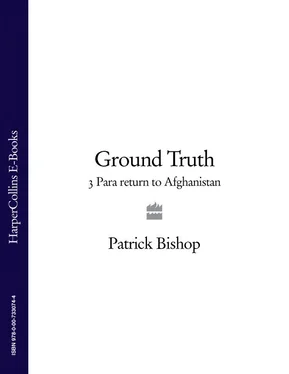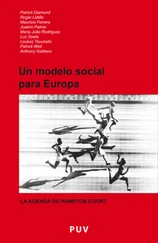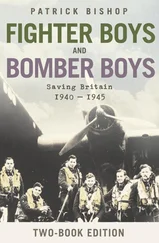The high hopes at the start of the mission had encouraged visions of grand construction projects that would help pluck Helmandis from medieval squalor and ease them into the twenty-first century. By the spring of 2008 there were few improvements to report. The task of supervising the rebuilding programme lay with the Helmand Provincial Reconstruction Team, drawn from the Foreign Office, the Department for International Development (DfID) and the Ministry of Defence. The dangers of life in Helmand had severely restricted their activities. Their work was limited to funding and managing at arm’s length small schemes such as refurbishing schools, cleaning the streets and improving small stretches of road.
Like the military, the civilian players in Helmand had learned to dampen optimism about what their presence could achieve. They discouraged attempts to measure progress in terms of new hospitals, schools and colleges. They downplayed their own role in the great enterprise. They were there to aid a metamorphosis called ‘Afghanisation’, a transformation by which the government and people of the country turned away from factionalism and alienation and took charge of their own affairs.
The soldier leading 16 Air Assault Brigade to Helmand was finely attuned to the realities he was facing. Brigadier Mark Carleton-Smith impressed almost everyone who came across him. He was short and slight with blue eyes, fair hair and light skin. Despite a traditional upper-class military background he was a very modern British warrior. He was educated at Eton and Durham University and was commissioned into the Irish Guards in 1986. He spent the following years alternating sharp-end soldiering in dangerous places with high-powered staff appointments. Much of his active service had been spent in Iraq and Afghanistan. When appointed to lead 16 Air Assault Brigade he was forty-two, the youngest one-star general in the British Army, and he was being given charge of its newest and largest brigade.
Carleton-Smith was charming and intelligent. He had a winning ability to translate his thoughts into pithy, inspirational language. In the pre-deployment preparations he devoted time to going around his units, explaining what he thought they should be doing and how they were going to do it. He talked to everyone, from majors down to privates fresh out of the depot.
‘He made a real point of articulating what he saw as the strategic direction,’ said Huw Williams. ‘He talked to all of us, the soldiers as well. Where we were going, not just in Herrick 8 but where we were on the path and where that path ultimately led. We didn’t have any of that last time. Then it was really a case of “well, let’s go out and see what happens.”’
Carleton-Smith started his talks by stating that violence was not a measure of success. ‘He said that we actually wanted to be coming back saying we hadn’t fired that many bullets or had that many contacts and we didn’t kill that many people,’ Huw Williams remembered. ‘His line very much was that we were not going out to fight at every opportunity and should consider sometimes withdrawing from a battle which we could win but which would have no strategic effect. We hadn’t got that sort of direction before.’
Among those sitting in the planning meetings was Major Ben Howell, of 7 Parachute Regiment Royal Horse Artillery, who would be commanding the batteries providing fire support to the Paras. Howell was clever, well read and had a sceptical and enquiring mind. He thought he recognised the source of some of Carleton-Smith’s ideas. ‘He talked in Rupert Smith terms,’ he said, a reference to a recently retired and famously intellectual senior officer who had produced a mammoth study of modern warfare entitled The Utility of Force. ‘The people were the prize, the battleground was not the fields of the Green Zone. It was actually the minds of the Afghans. So that’s where we should be focusing our attention, and that pouring blood and treasure down the Helmand river really wasn’t the way forward.’
In his first statement after taking over Carleton-Smith made barely any mention of fighting. The task was, he said, ‘continuing to improve the sense of security for the people—not just physical security but their human security in the round. It’s all about effective governance, rule of law and the provision of the basic necessities of life.’
If he made no mention of war, it was because in his mind the army was not engaged in one. ‘What I wanted to avoid was this sense of 2006,’ he said later. The intensity of the fighting in Helmand, he felt, had caused people to lose sight of the nature of the campaign they were there to prosecute. There was an inevitable tendency among the soldiers to reason that ‘if it looked and smelt and sounded like war fighting, then for God’s sake, we must be fighting a war’. In his view, however, ‘we’re not fighting a war. We’re supporting a democratically elected government to prosecute a counter-insurgency campaign, the nature [of which] is much more political than it is military.’
From this perspective, the ‘core of the matter was not the Taliban’. It was ‘the Afghan people and what they thought was happening’. The prize was ‘the human security of the people. The Taliban were to be marginalised and isolated, not made the absolute focus of the operation.’
Carleton-Smith had more resources than any of his predecessors with which to carry out his plans. There had been about 3600 soldiers in the 3 Para Battlegroup. 16 Air Assault Brigade, with all its attachments and additions, numbered around 8,000. Nonetheless, this was still nowhere near enough to exert control over more than a fraction of Helmand. He decided to ‘recognise the relative limits of our resources on the locals, and [that] there was no point getting ahead of ourselves’. Rather than extend their area of operations beyond what they were able to hold, the intention was to ‘try and deepen the government’s control and influence and authority in those areas where we actually have the capacity to bloody well hold the ring, and not find ourselves stretched further’.
The British were now effectively fixed in four places, Lashkar Gah, Sangin, Musa Qaleh and Kajaki, with a presence in the outposts of Now Zad in the north and Garmsir in the south. Carleton-Smith had no intention of expanding out of these places or trying to join them up. To do so would simply mean displacing the Taliban to another location and spreading their contagion to a previously benign area. The intention was to deepen the mission in Helmand, not to broaden it.
Carleton-Smith also had a civilian plan to work to which laid out in fairly concrete terms what the British presence was hoping to achieve in Helmand. The overall framework for the UK’s efforts was set out in the ‘Helmand Roadmap’, which pledged support to programmes in seven ‘core’ fields: politics and reconciliation, governance, security, rule of law, economic development, counter-narcotics and strategic communications. The plan began with the idea that attention should focus on the few areas where there was some fragmentary infrastructure and the ghost of governance and laid down some milestones to mark progress over a two-year period. In that time, it was hoped, Lashkar Gah would develop into a centre of sound government and administration. Gereshk, 80 kilometres to the east, would be promoted as a financial centre. The focus would then switch northwards to Sangin and Musa Qaleh. If possible a fifth centre would be developed, either at Kajaki or Garmsir in the south. None of this thinking was new. The 3 Para Battlegroup had arrived in Helmand in 2006 with much the same ideas. But now these had solidified into a design for action. Coordinating the activities of the army, the Foreign Office and the DfID was to turn out to be complicated, however.
Читать дальше












